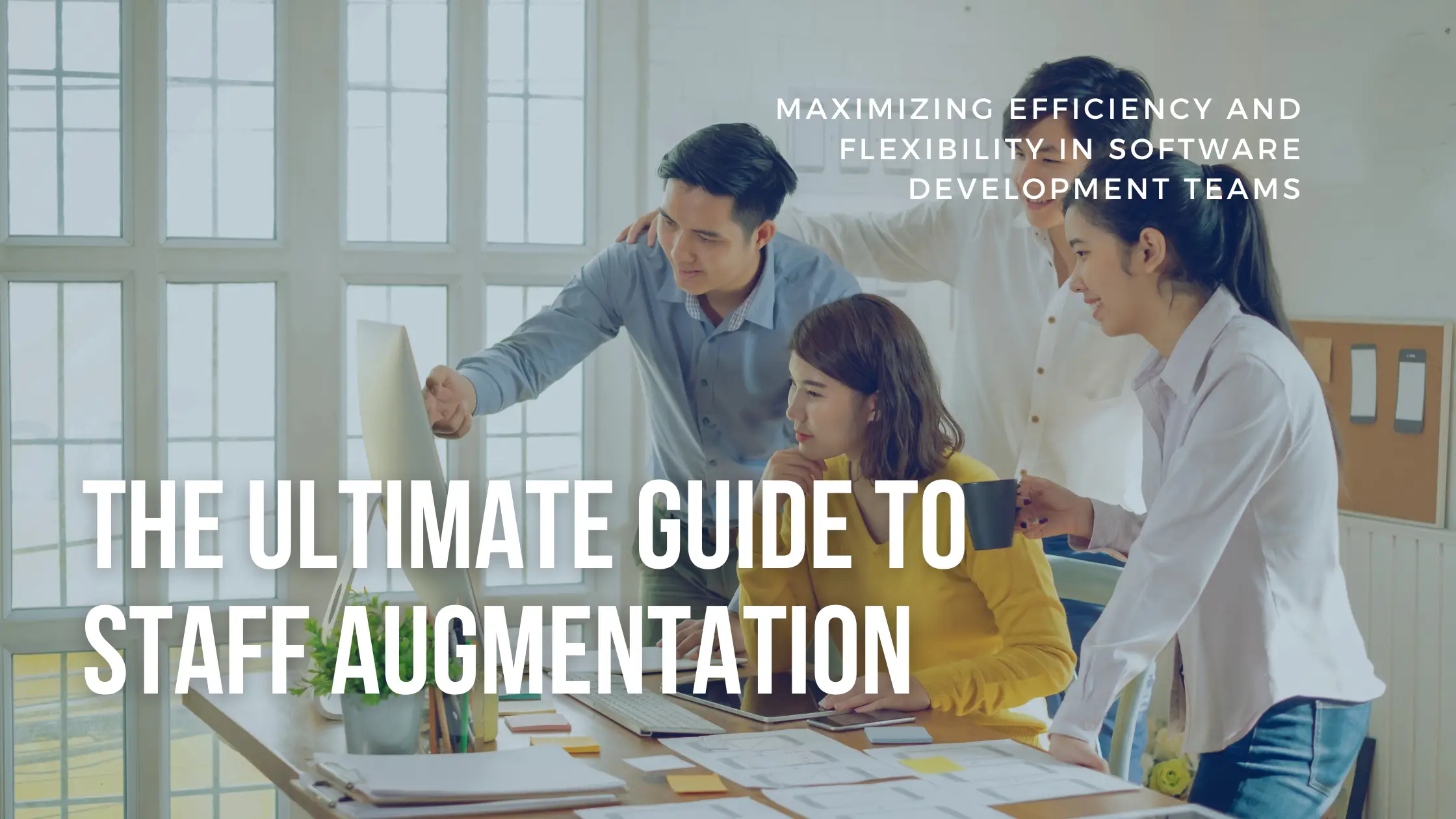In today’s fast-paced digital landscape, software development teams face constant pressure to deliver high-quality products quickly and efficiently. Balancing workload, managing deadlines, and maintaining flexibility can be daunting. This is where staff augmentation comes in—a strategy that can revolutionize how teams operate. In this ultimate guide, we will delve into staff augmentation strategies, their benefits, and how to implement them effectively to maximize efficiency and flexibility in software development teams.
Understanding Staff Augmentation
What is Staff Augmentation?
Staff augmentation is a flexible outsourcing strategy that allows companies to hire tech talent globally and manage augmented teams directly. Instead of hiring full-time employees, companies bring in external professionals to fill specific skill gaps or boost workforce capacity for particular projects. This approach enables businesses to scale their teams up or down as needed, ensuring they have the right talent at the right time.
Types of Staff Augmentation
- Short-term Augmentation: Ideal for projects with a defined timeline or to cover for temporary absences.
- Long-term Augmentation: Suitable for ongoing projects or to fulfill continuous skill requirements.
- Skill-based Augmentation: Used to fill specific skill gaps within the existing team, such as hiring a cybersecurity expert or a data scientist.
Benefits of Staff Augmentation
Enhanced Flexibility
One of the primary advantages of staff augmentation is the flexibility it offers. Companies can quickly adjust their team size based on project requirements, ensuring they are not overstaffed during slow periods or understaffed when demand increases. This flexibility also allows businesses to respond promptly to market changes and new opportunities.
Cost Efficiency
Hiring full-time employees can be expensive, with costs including salaries, benefits, training, and office space. Staff augmentation reduces these expenses as companies only pay for the services they need, when they need them. This model also eliminates the long-term financial commitments associated with permanent hires.
Access to Specialized Skills
Technology evolves rapidly, and staying ahead often requires niche skills. Staff augmentation provides access to a global talent pool, enabling companies to bring in experts with the exact skills needed for specific projects. This ensures that projects benefit from the latest knowledge and techniques without investing in extensive training for existing staff.
Faster Time to Market
With staff augmentation, companies can quickly assemble teams with the right expertise, reducing the time required to launch new products or features. This accelerated development process helps businesses stay competitive and meet customer demands more effectively.
Implementing Staff Augmentation Strategies
Identifying the Need
The first step in implementing staff augmentation is recognizing the need for additional resources. This could be due to a sudden increase in workload, the requirement for specialized skills, or the need to meet tight deadlines. Conduct a thorough assessment of your current team’s capabilities and identify the gaps that need to be filled.
Choosing the Right Partner
Selecting the right staff augmentation partner is crucial. Look for providers with a proven track record, industry expertise, and a robust talent pool. Evaluate their recruitment process, the quality of their talent, and their ability to understand and align with your project goals.
Defining Roles and Responsibilities
Clearly outline the roles and responsibilities of the augmented staff. This includes defining project goals, deliverables, timelines, and reporting structures. Effective communication and well-defined expectations help in integrating external professionals seamlessly into your existing team.
Onboarding and Integration
A smooth onboarding process is essential for maximizing the productivity of augmented staff. Provide them with the necessary tools, resources, and information about your company’s processes and culture. Encourage collaboration and open communication between your in-house team and the augmented staff to foster a cohesive working environment.
Managing and Monitoring Performance
Regularly monitor the performance of the augmented staff to ensure they are meeting project objectives and quality standards. Use performance metrics and feedback mechanisms to identify areas for improvement and address any issues promptly. Continuous performance management helps in maintaining high productivity levels and achieving desired outcomes.
Leveraging Technology
Utilize technology to facilitate seamless collaboration and communication between your in-house and augmented teams. Project management tools, communication platforms, and collaborative software can help in tracking progress, sharing updates, and ensuring everyone stays on the same page.
Best Practices for Successful Staff Augmentation
Focus on Communication
Effective communication is the backbone of successful staff augmentation. Establish clear communication channels and encourage regular check-ins to keep everyone informed and aligned. Transparency and open dialogue help in building trust and preventing misunderstandings.
Prioritize Cultural Fit
While technical skills are important, cultural fit should not be overlooked. Augmented staff should align with your company’s values, work ethics, and team dynamics. This ensures smooth collaboration and minimizes potential conflicts.
Invest in Training
Although staff augmentation provides immediate access to skilled professionals, investing in training and development can further enhance their capabilities and integration into your team. Offer training programs that align with your project’s needs and the professional growth of the augmented staff.
Foster Team Collaboration
Encourage collaboration between your in-house team and augmented staff. Create opportunities for them to work together, share knowledge, and build relationships. This fosters a sense of unity and ensures everyone works towards common goals.
Regularly Evaluate and Adjust
Staff augmentation is not a set-and-forget solution. Regularly evaluate the effectiveness of your augmentation strategy and make necessary adjustments. Gather feedback from both in-house and augmented staff to identify areas for improvement and implement changes that enhance efficiency and productivity.
Conclusion
Staff augmentation is a powerful strategy for maximizing efficiency and flexibility in software development teams. By leveraging external talent to fill skill gaps and scale teams according to project needs, companies can achieve faster time to market, cost savings, and access to specialized skills. Implementing staff augmentation strategies effectively involves identifying needs, choosing the right partner, defining roles, onboarding smoothly, managing performance, and leveraging technology. With the right approach, staff augmentation can transform how software development teams operate, driving success in an ever-evolving digital landscape. Ready to optimize your team? Explore Software Pura Vida’s Staff Augmentation services today!


